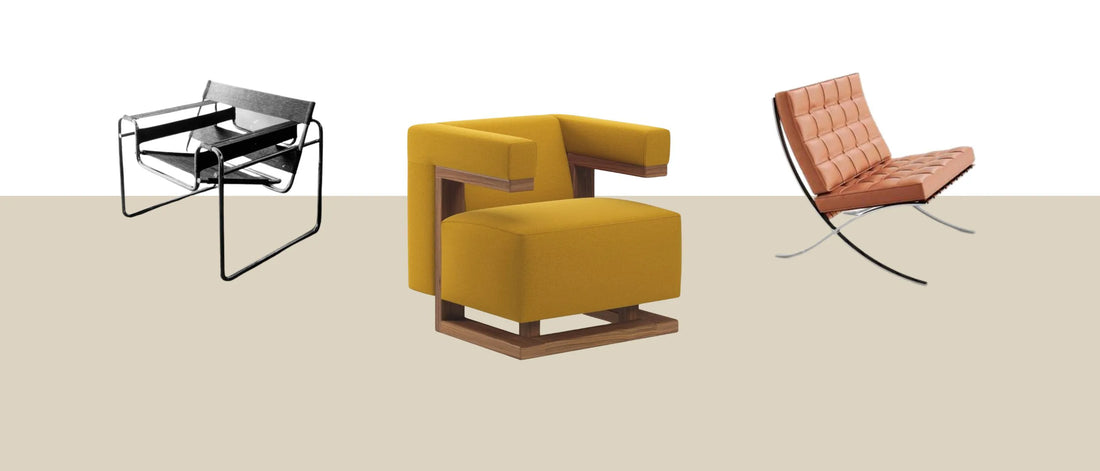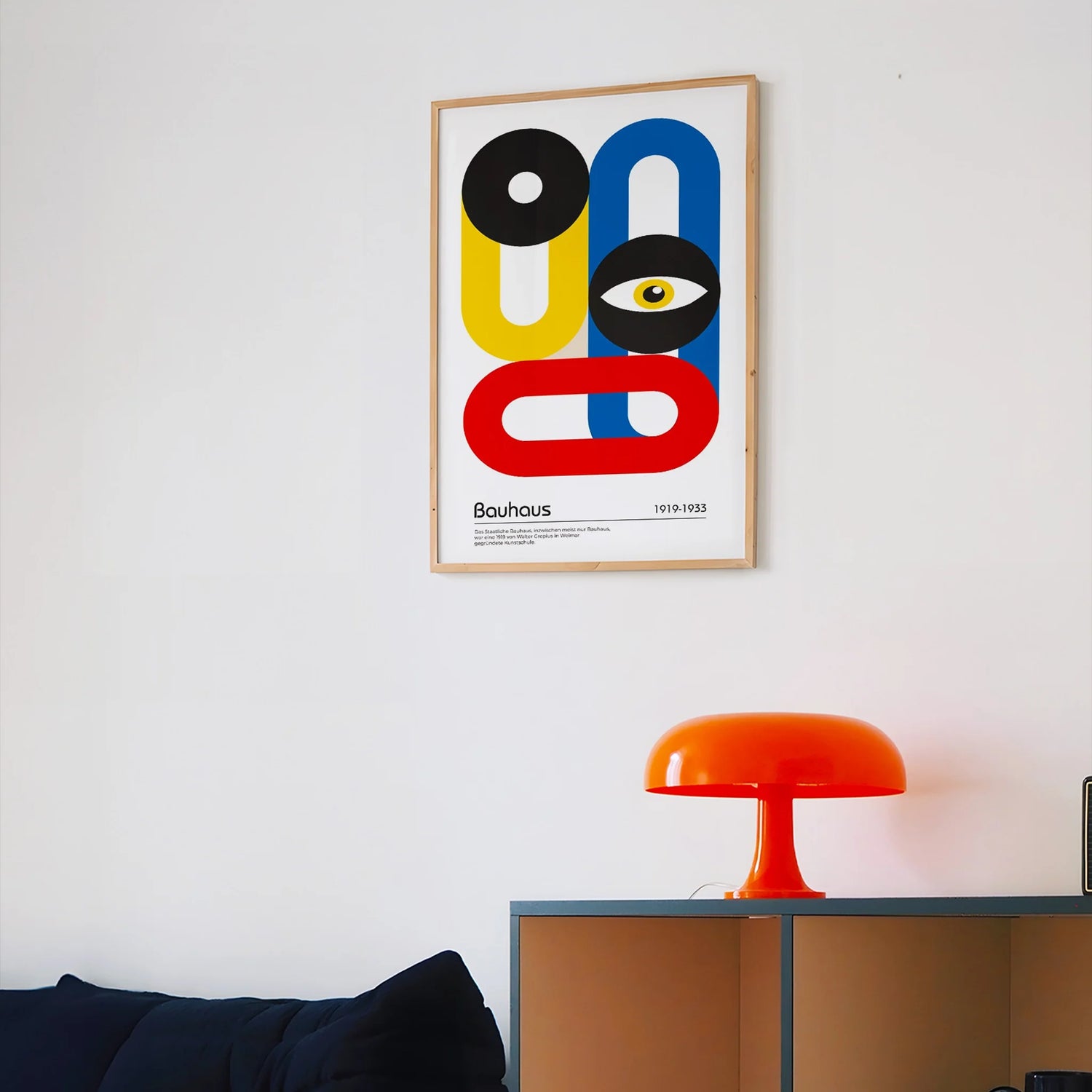
The legacy of the Bauhaus movement
The Bauhaus, founded in 1919 by Walter Gropius in Weimar, revolutionized the world of design and craft by integrating art, craft, and industry into a unified approach. This article explores the Bauhaus' profound influence on these crucial fields, highlighting its pioneering contributions that continue to inspire modern design.
The Bauhaus Approach to Design
At the heart of the Bauhaus was a radically new approach to design, where art and technology were fused to create objects that were both functional and aesthetic. This approach aimed to break with tradition and explore new forms, materials and techniques, shaping the foundations of modern design.
The Bauhaus Workshops
The Bauhaus school included a series of hands-on workshops where students were encouraged to experiment and innovate. Workshops such as metal, wood, textiles, ceramics, and typography allowed students to develop their technical skills while exploring new ideas in their respective disciplines.
The Contributions of Marcel Breuer
Marcel Breuer, famous for his contributions to furniture design, left his mark on the Bauhaus with his innovative designs. His Wassily chair, designed in 1925, used tubular metal as the primary material for the first time, combining lightness and functionality in a sleek, modern design.
The Textile Workshop under the direction of Gunta Stölzl
Gunta Stölzl headed the Bauhaus textile workshop from 1927 to 1931, transforming the field of textile design with his experimental approach and mastery of color and texture. His designs combined abstract patterns with innovative weaving techniques, marking a milestone in the history of modern textile design.
The Impact of Bauhaus on Graphic Design
In addition to furniture and textile design, the Bauhaus also had a profound influence on graphic design. The typography workshop, led by Herbert Bayer, introduced new sans-serif typographies and avant-garde layout concepts that revolutionized the way visual information was communicated.
Herbert Bayer, an artist and designer, played a key role in this revolution. He developed a system of universal typography that simplified and standardized characters, making information more accessible and readable. His posters and graphic works used bright colors and geometric shapes to create a distinctive visual language, influencing not only contemporary graphic design but also advertising and visual communication on a large scale.
Theories of Color and Form
The Bauhaus also made significant contributions to the theory of color and form, exploring the emotional and psychological interactions of colors and abstract geometry. Wassily Kandinsky, an artist and art theorist, developed theories about the emotional impact of colors and their potential to express deep and universal feelings.
Bauhaus students experimented with these concepts in various workshops, creating abstract compositions and artistic works that challenged conventions and inspired a new generation of artists and designers. These theories laid the foundations for modern art and artistic expression, influencing the development of contemporary design around the world.
International Influence of Bauhaus in Design and Crafts
The influence of the Bauhaus quickly spread beyond Germany to become an international phenomenon. The innovative ideas and teaching methods pioneered at the school inspired artists and designers across Europe and the United States, shaping distinctive art movements and design styles in each host country.
In Europe, figures such as the Dutch Gerrit Rietveld and the Swiss Max Bill adopted Bauhaus principles into their own practices, contributing to the emergence of the modern movement. In the United States, the arrival of Bauhaus teachers such as Walter Gropius and Ludwig Mies van der Rohe had a profound impact on American architecture and design, influencing generations of architects and designers.
The Bauhaus Legacy in Contemporary Design
The Bauhaus legacy continues to resonate in contemporary design, where its principles of functionality, simplicity, and harmony between art and industry remain relevant. Many design schools around the world continue to teach the Bauhaus ideals, encouraging innovation and experimentation in product design, furniture, architecture, and the visual arts.
Contemporary designers continue to draw inspiration from the Bauhaus' experimental approaches, adapting its concepts to the modern context while respecting the visionary spirit that characterized the school. In this, the Bauhaus remains not only a historical reference but also a source of inspiration and challenges to continually rethink the role of design in contemporary society.
Conclusion
The Bauhaus, with its radically new and integrated approach to art, craft and industry, profoundly influenced the landscape of modern design and craftsmanship. Founded in 1919 by Walter Gropius in Weimar and evolving through the political turmoil of its time, the Bauhaus was much more than an architectural school: it was a laboratory of ideas where creativity was unleashed and artistic conventions were challenged.
Through its hands-on workshops and progressive teachings, the Bauhaus not only trained generations of artists and designers, but also revolutionized industrial and artistic practices worldwide. The innovative contributions of iconic figures such as Marcel Breuer, Gunta Stölzl, Herbert Bayer, and Wassily Kandinsky laid the foundations for modern design that emphasized functionality, simplicity, and a minimalist aesthetic.
The Bauhaus’ influence quickly spread beyond Germany, reaching Europe, the United States, and beyond, where its principles were adopted, adapted, and transformed by generations of designers. From architecture to graphic arts, furniture, and textiles, Bauhaus shaped artistic movements and design styles that continue to resonate today.
In conclusion, the Bauhaus’ legacy lies not only in its historical achievements but also in its ability to challenge conventions, encourage experimentation, and promote a holistic vision of design as a catalyst for social and cultural progress. As we celebrate the centenary of this revolutionary institution, it is clear that the Bauhaus remains a source of inspiration and a guide for constantly rethinking the role of design in our changing world.
Bibliographies
- Droste, Magdalena. Bauhaus 1919-1933 . Taschen, 2002.
- Gropius, Walter. The New Architecture and the Bauhaus . MIT Press, 1965.
- Whitford, Frank. Bauhaus . Thames & Hudson, 1984.
- Wick, Rainer K. Teaching at the Bauhaus . Hatje Cantz, 2000.
